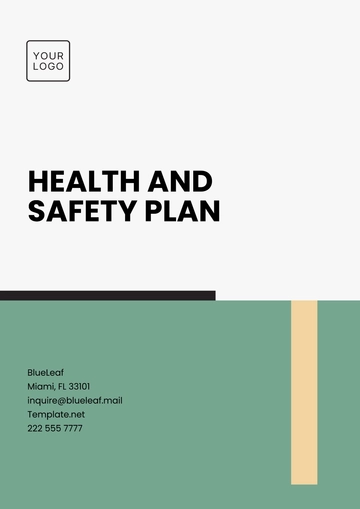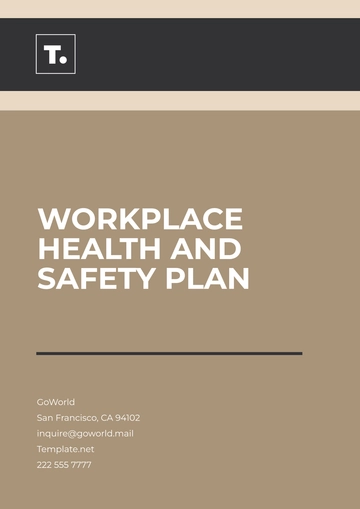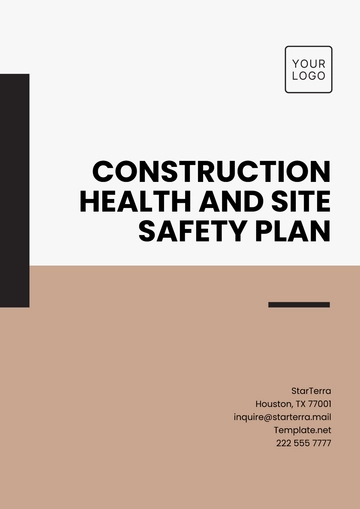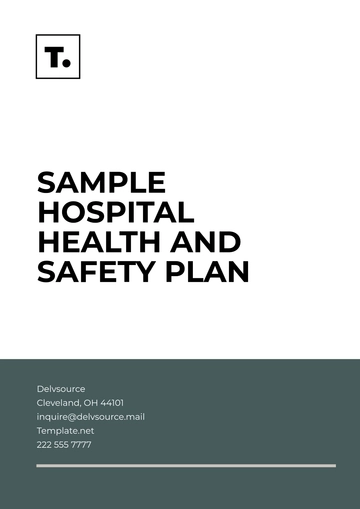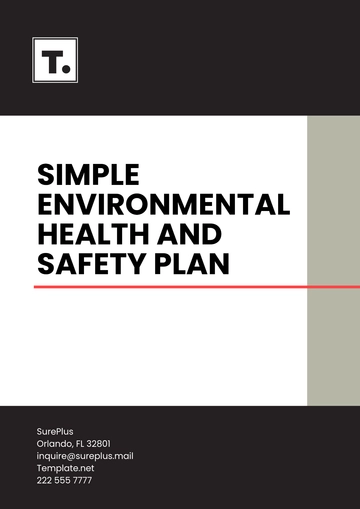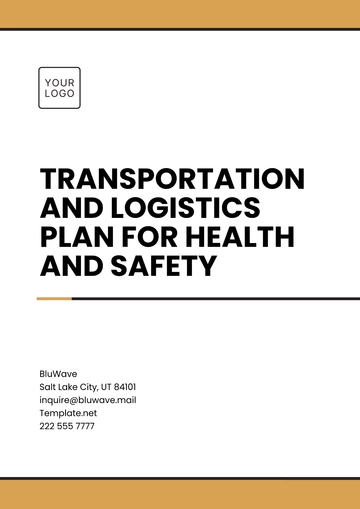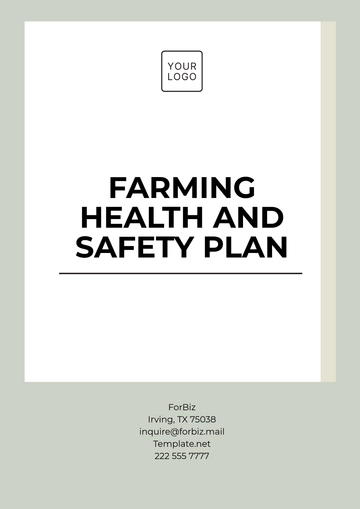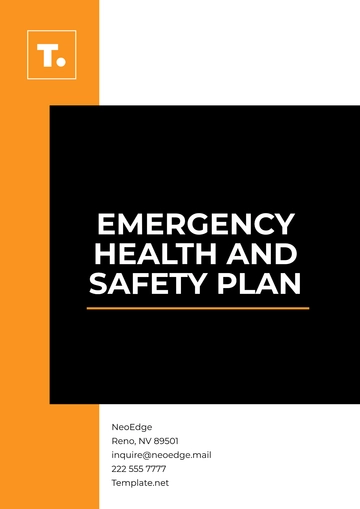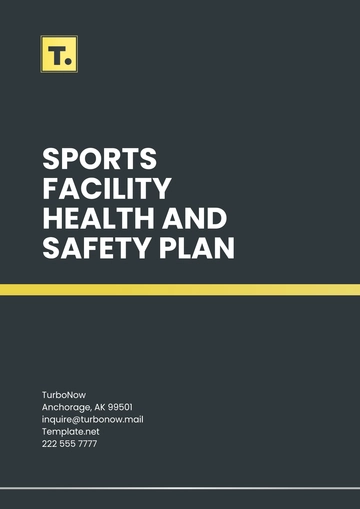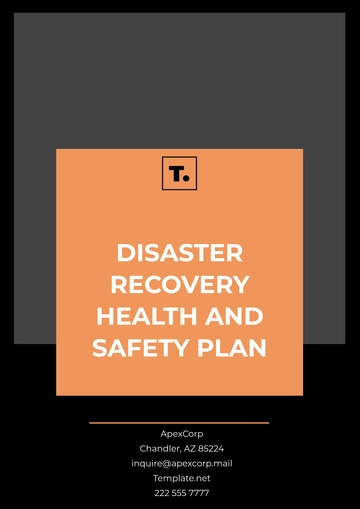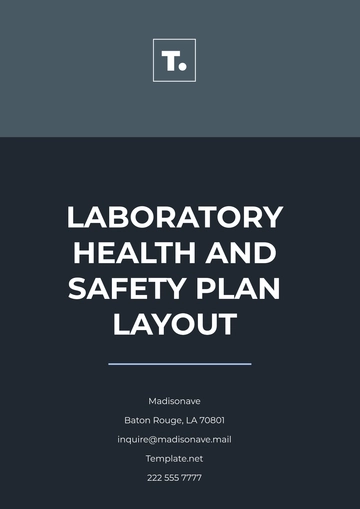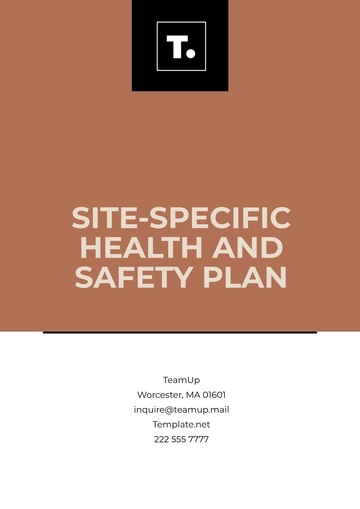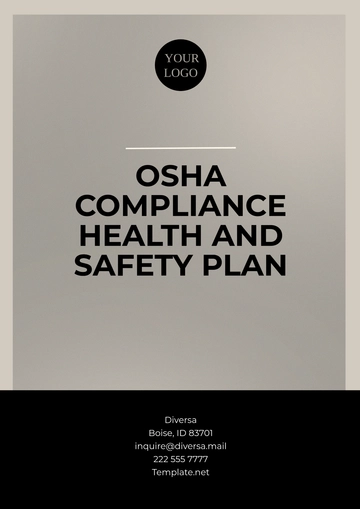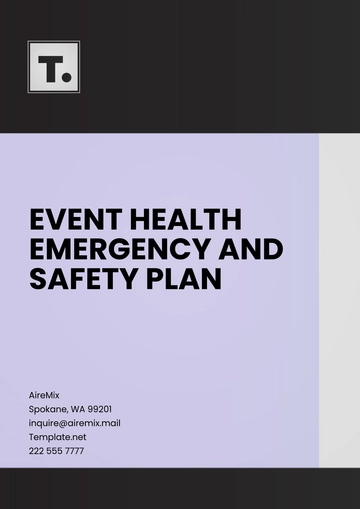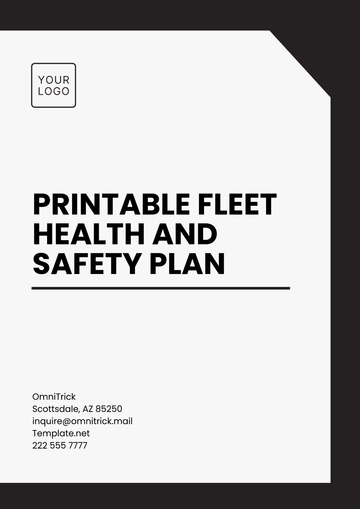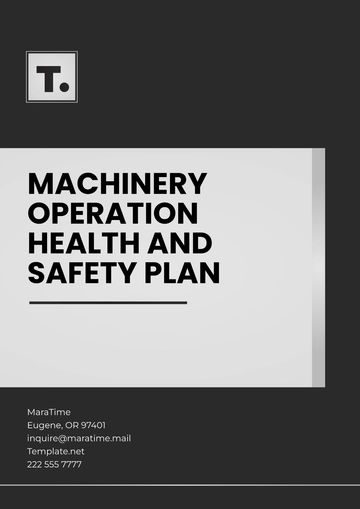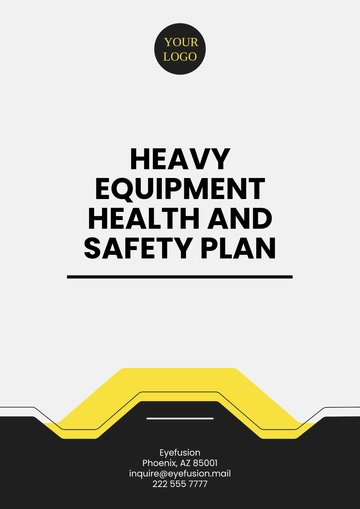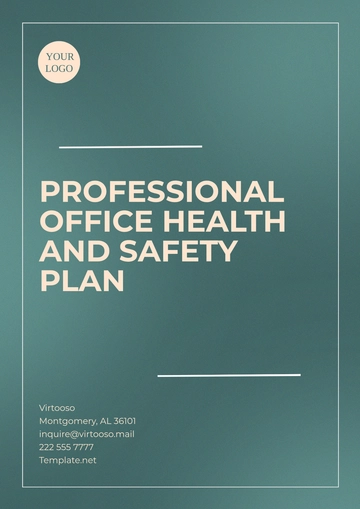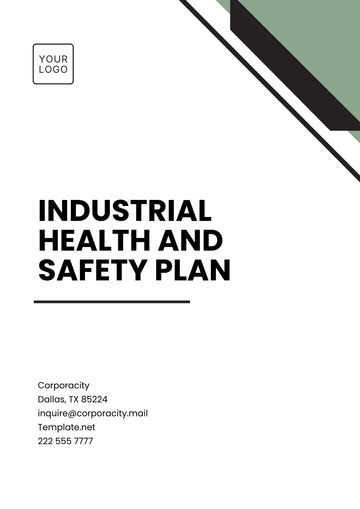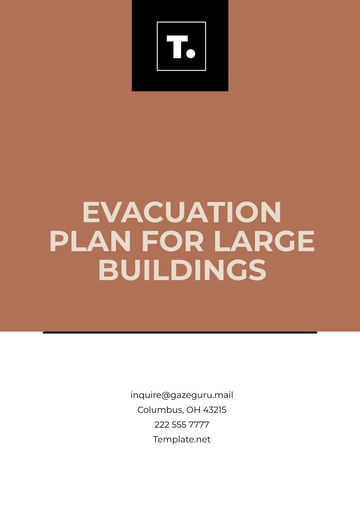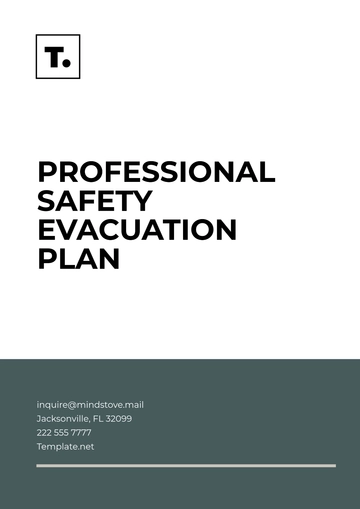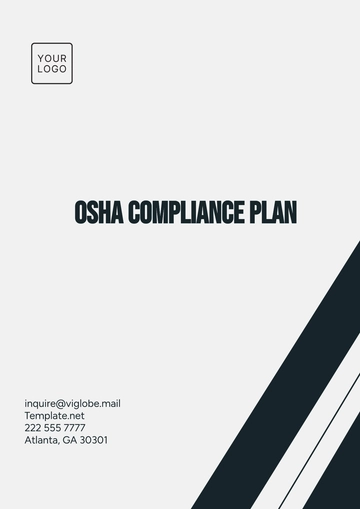Free Home Fire Safety Plan
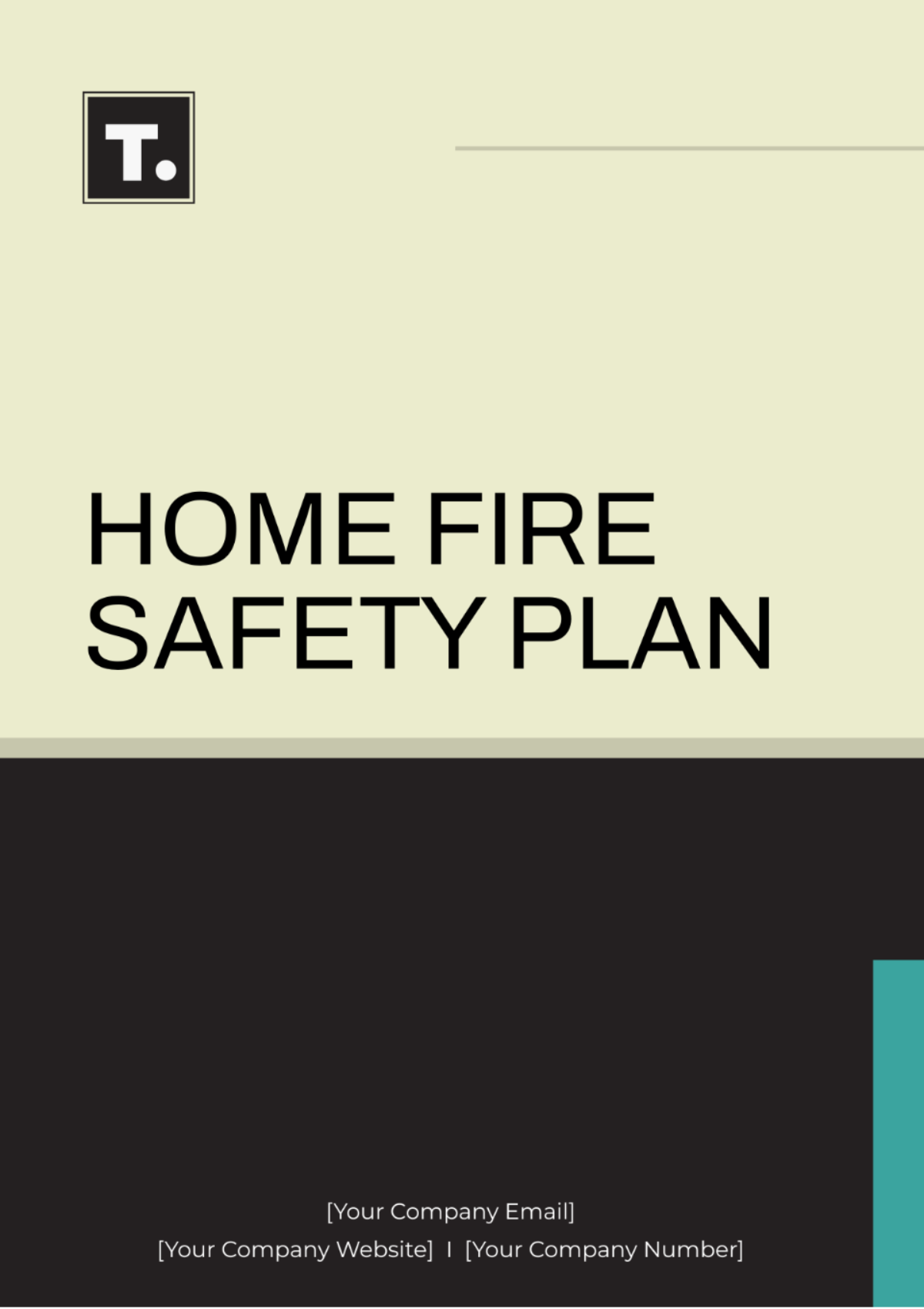
_________________________________________________________________________________
_________________________________________________________________________________
I. Introduction
The Home Fire Safety Plan has been meticulously crafted to safeguard lives and property during fire emergencies. It encompasses preventive measures, evacuation procedures, and safety protocols to ensure the safety of all occupants and minimize fire-related risks.
_________________________________________________________________________________
II. Contact Information
Emergency Contact: [Your Company Number]
Address: [Your Company Address]
Email: [Your Email]
Website: [Your Company Website]
_________________________________________________________________________________
III. Preventive Measures
A. Fire Hazard Identification
Identify and eliminate potential fire hazards in your home.
Regularly check electrical appliances and outlets for any signs of wear or damage.
Store flammable materials safely and keep them away from heat sources.
B. Smoke Alarms
Install smoke alarms on every level of your home, including inside bedrooms and outside sleeping areas.
Test smoke alarms monthly, and replace batteries at least once a year.
Replace smoke alarms every 10 years.
C. Fire Extinguishers
Keep fire extinguishers in easily accessible locations, such as the kitchen and garage.
Ensure all family members know how to use a fire extinguisher.
_________________________________________________________________________________
IV. Evacuation Procedures
A. Develop an Evacuation Plan
Create a floor plan of your home identifying two exits out of every room.
Designate a safe meeting spot outside your home where everyone can gather after evacuating.
B. Practice Drills
Conduct regular fire drills to practice your evacuation plan.
Ensure all family members know what to do and where to go in case of a fire.
C. Evacuating Safely
If there's smoke, stay low to the ground to avoid inhaling toxic fumes.
Before opening any doors, feel the door and doorknob for heat. If they're hot, use an alternate escape route.
Do not re-enter the house once you've evacuated. Wait for fire department personnel to confirm it's safe.
_________________________________________________________________________________
V. Safety Protocols
A. Communication
Ensure everyone in the household can contact emergency services (dial 911 in the U.S.).
Keep mobile phones and chargers accessible to call for help if needed.
B. Special Considerations
Account for any special needs or disabilities when creating and practicing your evacuation plan.
Ensure children, elderly family members, and pets have assistance in the event of a fire.
_________________________________________________________________________________
VI. Regular Review and Updates
It's essential to review and update your Home Fire Safety Plan regularly. New potential hazards can emerge, and routines can change, lowering preparedness. Monthly checks and annual comprehensive reviews are recommended.
_________________________________________________________________________________
VII. Words of Encouragement
Remember, being prepared can save lives. Stay calm, ensure your family is familiar with this safety plan, and practice regularly. Together, we can safeguard our home and loved ones. Your diligence and commitment to fire safety make a significant difference.
_________________________________________________________________________________
VIII. Conclusion
This Home Fire Safety Plan is designed to protect you and your loved ones. By following the preventive measures, practicing evacuation procedures, and keeping information updated, you are taking important steps towards a safer home environment. Stay vigilant and confident in your ability to handle a fire emergency.
_________________________________________________________________________________
- 100% Customizable, free editor
- Access 1 Million+ Templates, photo’s & graphics
- Download or share as a template
- Click and replace photos, graphics, text, backgrounds
- Resize, crop, AI write & more
- Access advanced editor
Introducing the Home Fire Safety Plan Template from Template.net! Crafted for your peace of mind, this editable and customizable template ensures your family's safety. With user-friendly features and editable options, it's designed to fit your unique needs. Editable in our Ai Editor too, ensuring seamless customization. Safety starts here.
You may also like
- Finance Plan
- Construction Plan
- Sales Plan
- Development Plan
- Career Plan
- Budget Plan
- HR Plan
- Education Plan
- Transition Plan
- Work Plan
- Training Plan
- Communication Plan
- Operation Plan
- Health And Safety Plan
- Strategy Plan
- Professional Development Plan
- Advertising Plan
- Risk Management Plan
- Restaurant Plan
- School Plan
- Nursing Home Patient Care Plan
- Nursing Care Plan
- Plan Event
- Startup Plan
- Social Media Plan
- Staffing Plan
- Annual Plan
- Content Plan
- Payment Plan
- Implementation Plan
- Hotel Plan
- Workout Plan
- Accounting Plan
- Campaign Plan
- Essay Plan
- 30 60 90 Day Plan
- Research Plan
- Recruitment Plan
- 90 Day Plan
- Quarterly Plan
- Emergency Plan
- 5 Year Plan
- Gym Plan
- Personal Plan
- IT and Software Plan
- Treatment Plan
- Real Estate Plan
- Law Firm Plan
- Healthcare Plan
- Improvement Plan
- Media Plan
- 5 Year Business Plan
- Learning Plan
- Marketing Campaign Plan
- Travel Agency Plan
- Cleaning Services Plan
- Interior Design Plan
- Performance Plan
- PR Plan
- Birth Plan
- Life Plan
- SEO Plan
- Disaster Recovery Plan
- Continuity Plan
- Launch Plan
- Legal Plan
- Behavior Plan
- Performance Improvement Plan
- Salon Plan
- Security Plan
- Security Management Plan
- Employee Development Plan
- Quality Plan
- Service Improvement Plan
- Growth Plan
- Incident Response Plan
- Basketball Plan
- Emergency Action Plan
- Product Launch Plan
- Spa Plan
- Employee Training Plan
- Data Analysis Plan
- Employee Action Plan
- Territory Plan
- Audit Plan
- Classroom Plan
- Activity Plan
- Parenting Plan
- Care Plan
- Project Execution Plan
- Exercise Plan
- Internship Plan
- Software Development Plan
- Continuous Improvement Plan
- Leave Plan
- 90 Day Sales Plan
- Advertising Agency Plan
- Employee Transition Plan
- Smart Action Plan
- Workplace Safety Plan
- Behavior Change Plan
- Contingency Plan
- Continuity of Operations Plan
- Health Plan
- Quality Control Plan
- Self Plan
- Sports Development Plan
- Change Management Plan
- Ecommerce Plan
- Personal Financial Plan
- Process Improvement Plan
- 30-60-90 Day Sales Plan
- Crisis Management Plan
- Engagement Plan
- Execution Plan
- Pandemic Plan
- Quality Assurance Plan
- Service Continuity Plan
- Agile Project Plan
- Fundraising Plan
- Job Transition Plan
- Asset Maintenance Plan
- Maintenance Plan
- Software Test Plan
- Staff Training and Development Plan
- 3 Year Plan
- Brand Activation Plan
- Release Plan
- Resource Plan
- Risk Mitigation Plan
- Teacher Plan
- 30 60 90 Day Plan for New Manager
- Food Safety Plan
- Food Truck Plan
- Hiring Plan
- Quality Management Plan
- Wellness Plan
- Behavior Intervention Plan
- Bonus Plan
- Investment Plan
- Maternity Leave Plan
- Pandemic Response Plan
- Succession Planning
- Coaching Plan
- Configuration Management Plan
- Remote Work Plan
- Self Care Plan
- Teaching Plan
- 100-Day Plan
- HACCP Plan
- Student Plan
- Sustainability Plan
- 30 60 90 Day Plan for Interview
- Access Plan
- Site Specific Safety Plan
